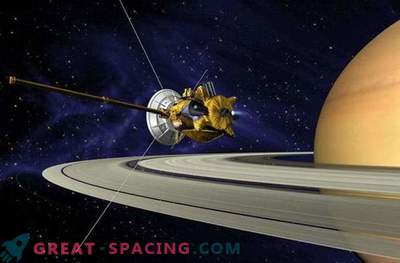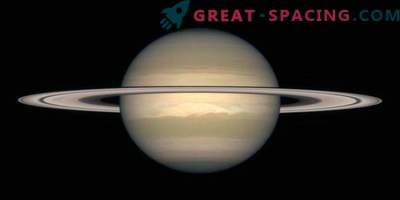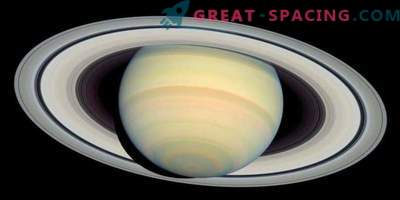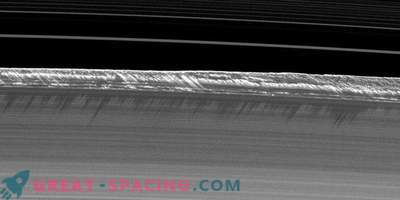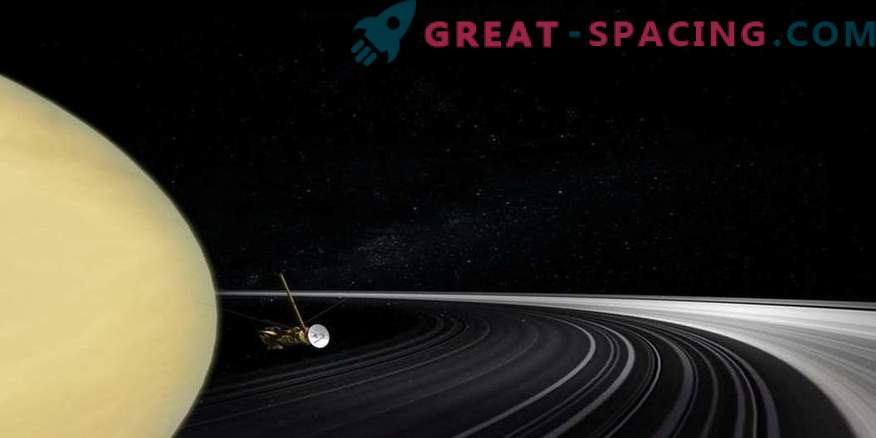
Artistic vision of the Cassini spacecraft near the rings of Saturn
Saturn could not always boast chic rings. The new study suggests that their age can be dated to the period of the existence of dinosaurs on Earth. About the age of the rings of the planet argue for a long time. Some believed that they came along with Saturn 4.5 billion years ago from the ice fragments remaining in orbit after the formation of the solar system. Others are convinced that these are young formations that appeared after Saturn's gravity severed comets or an icy satellite.
How to solve the riddle? Need to weigh the rings. Initially, they emerged from bright ice, which eventually became polluted and darker due to fragments from external sources of the solar system. A few years ago, the Cassini mission found out that the rings are only 1% contaminated. If we were able to weigh the rings, then we can calculate how long it took to accumulate a sufficient amount of dirt (1%). From this age is already derived.
Scientists decided to carry out similar calculations. The basis was the data of the Cassini spacecraft, collected before its immersion into the atmosphere of Saturn in September 2017. The device moved between the planet and the rings. During the dive, scientists were able to measure gravity, the mass of the planet and rings. Cassini made 6 passes between the rings at altitudes of 2600-3900 km above the clouds of Saturn. The speed was measured due to the Doppler shift. Early estimates from the Voyager span showed that the mass of the rings reached about 28 million billion metric tons. New data provides an indicator of 15.4 million billion tons. It is concluded that the rings appeared 10-100 million years ago. Dinosaurs died out 66 million years ago.

The interior of Saturn is represented by three layers: a deep inner core (heavy elements), a liquid metallic hydrogen shell and a layer of molecular hydrogen. Cassini measurements show core size, wind flow in the atmosphere, and mass of rings
The Cassini dive also revealed key details of the planet’s internal structure. For example, they found that jet streams around the equator of Saturn (the strongest wind is 1500 km / h) extend to a depth of 9000 km. Moreover, they rotate the colossal volume of mass around the planet 4% faster than the lower layer. The analysis also says that the rocky core of Saturn is 15-18 times larger than the Earth’s mass.
